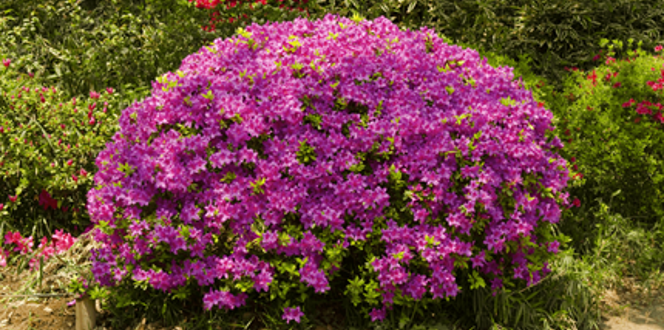Planting annuals is the fastest way to ramp up a landscape without breaking the bank. Studies show well-maintained landscapes boost property values and attract more shoppers and diners to local businesses and restaurants.
Annual flowers pack a punch of color that will turn any landscape from “drab” to “fab.” While it’s true that they are planted in the spring and inevitably die in the fall when exposed to frost or extreme cold, the impact annuals make during those three-to-four months is undeniable. Let’s uncover the best practices of planting annuals.
Your Guide To Choosing Annuals For Landscaping
Annual flowers fill bare landscaping spots for a lush, mature look and add texture, variety, and color that makes your property more memorable to clients, tenants, and visitors. The best annual displays include big blocks of bold color and raised planters at high visibility exit and entry points. These elements can help your display be visible from long distances and fast passing speeds.
When shopping for annuals at a garden center, look for a compact-sized plant with lots of buds—more buds at the garden center means more blooms in your landscape. Green foliage without spots or holes tells you the plants haven’t been affected by insects, and moist soil shows a properly watered starter plant.
Where Can I Plant Annuals?
Planting annuals are worth the investment; you just need to know where to plant them. There are several key placements for annuals that make certain you’re getting the most out of your plants. Some of these placements include:
- Home or business building entry-ways
- Hanging baskets
- Flower pots
- High visibility areas
When Is the Best Time To Plant Annual Flowers?
Annuals are best planted right after the last frost, but they can be planted well into spring or until the hot, high-temperature weather hits. The earlier you plant annuals during the growing season, the more benefit you will receive with growth and color.
Some annual flowers require deadheading, while others require daily or weekly watering. The key is choosing the right type of annual for your location.
Quick Selection Guide for Annual Flowers
Pansies
- Good for containers, borders, and as ground cover
- Ideal planting site will get morning sun but avoid the heat of the late afternoon
- Remove faded/dead flowers to encourage growth
- Need watered regularly
Begonias
- Easily fill spaces in the garden that will benefit from attractive foliage and are excellent for container combinations
- Plant where flowers will get afternoon shade
- Deadhead spent blooms
- Soil should remain moist but not too wet
Geraniums
- An outdoor plant that can typically be kept indoors over winter
- Place in area where plants will get 4-6 hours of sunlight daily
- Deadhead spent flowers
- Allow to dry between waterings, then water thoroughly
Impatiens
- Makes excellent houseplant or summer bedding and container plant
- Generally prefer shade
- Plant 8 to 12 inches apart in a flower bed for flowers to stay low to the ground
- Prefer humus-rich, moist, and well-drained soil
Petunias
- Grandiflora petunias are best grown in containers or hanging baskets while multiflora petunias are ideal for summer bedding or in a mixed border
- Plant in light, well-drained soil in full sun
- Remove faded/dead flowers to prolong blooming
- Regular watering isn’t necessary
Marigolds
- There are about 50 species of marigolds, but the most common are Tagetes erecta, T. patula, and T. tenuifolia
- Thrive in full sunshine and can withstand very hot summers
- Plant in moderately fertile, well-drained soil
- Allow soil to dry somewhat between waterings
- Most deer resistant of all annuals





